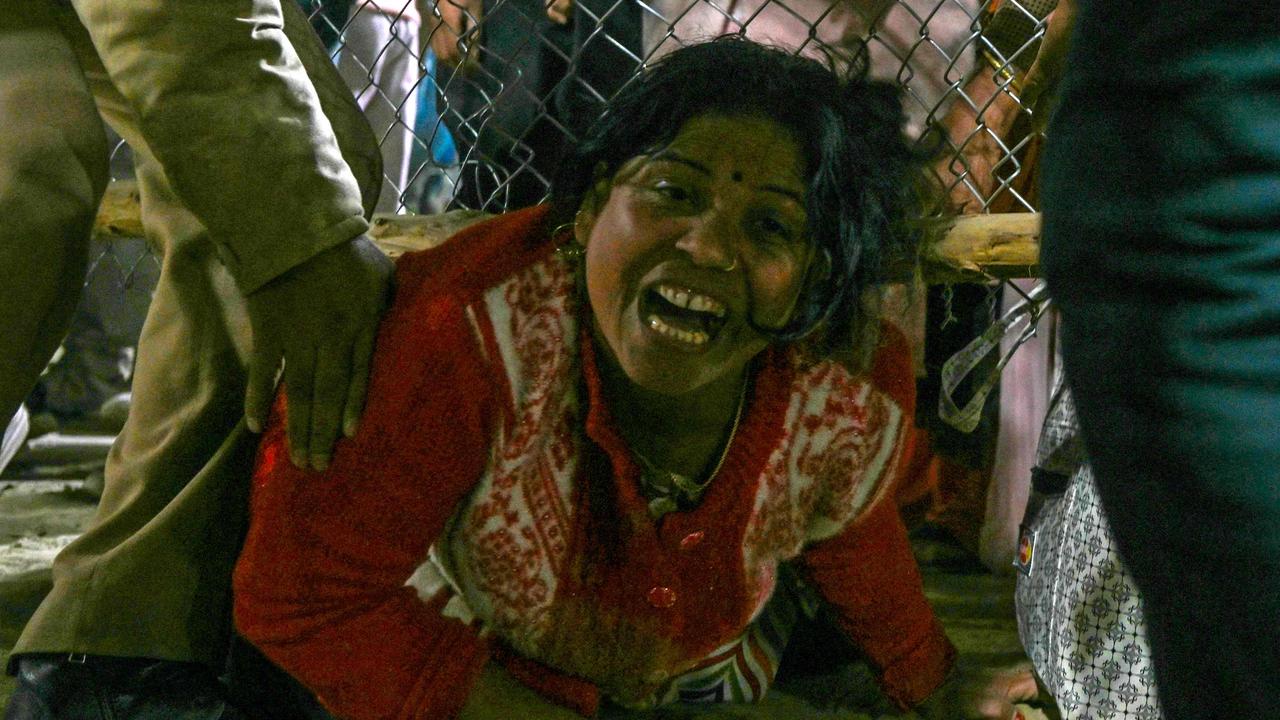Dark and treacherous: Perils of the Thai cave rescue
EFFORTS to rescue 12 boys from a flooded cave were “going to plan”, but after an experience Navy diver perished confidence is waning.
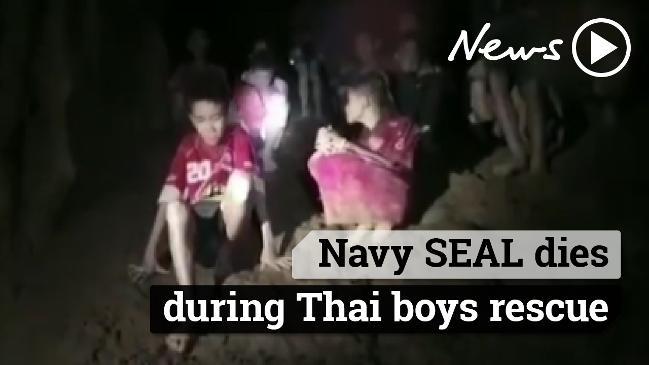
TWO days ago, Thai Navy SEALs were confident of bringing the 12 trapped schoolboys to safety via a 3km journey through interconnected chambers of the cave system which trapped them.
But now the treachery of the 10km-long Tham Luang cave in the northern Thai province of Chiang Rai’s monsoon season has claimed a victim.
Even the highly trained SEALs are not impervious to the treachery of the often tiny and flooded passages.
On Wednesday, Chiang Rai governor Narongsak Osoththanakorn confirmed water levels were receding and that “everything is going to plan”.
But following the death on Friday morning of volunteer and former Navy SEAL Saman Kunan, Osotthanakorn, Mr Osoththanakorn was less certain.
Oxygen levels in the cave, he said, had been depleted by the large number of rescue workers working in the cave network.
Rescuers were now trying to get a 5km-long ventilation cable through to the cave where the boys are to supply them with oxygen.
The rescue is compounded by the necessity for the SEAL divers to have to teach the teenage boys to dive.
And as revealed by a US certified cave diver, the skills required to pull off a rescue from the subterranean caverns of Tham Luang go beyond even the demands of normal cave diving.
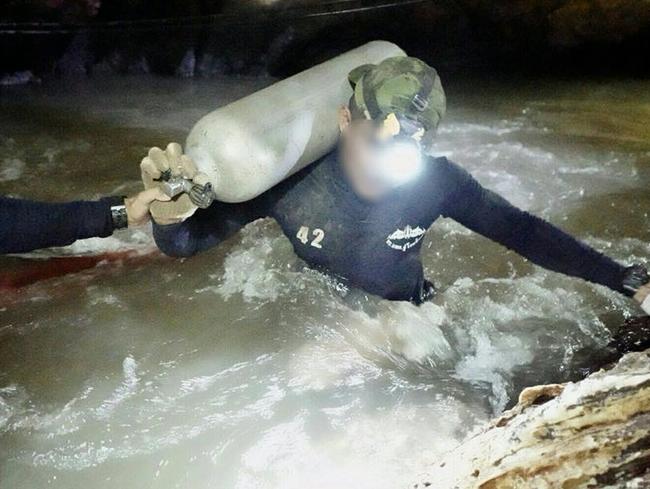
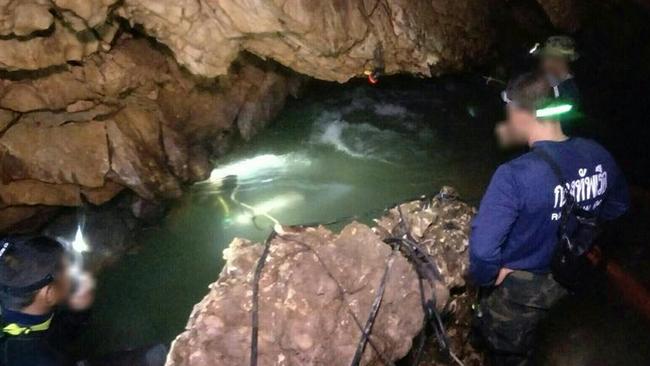
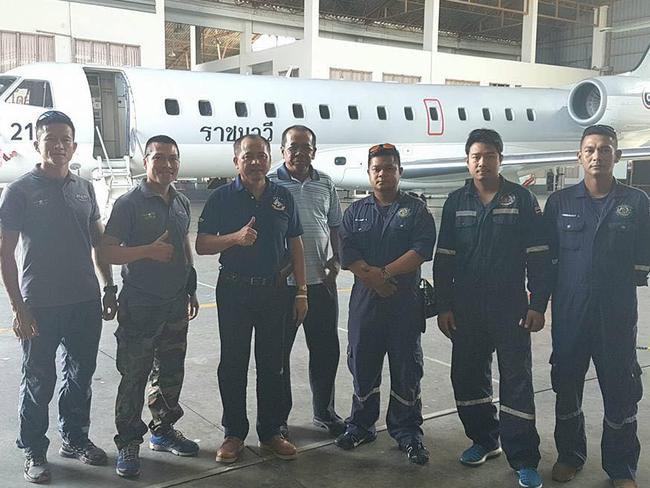
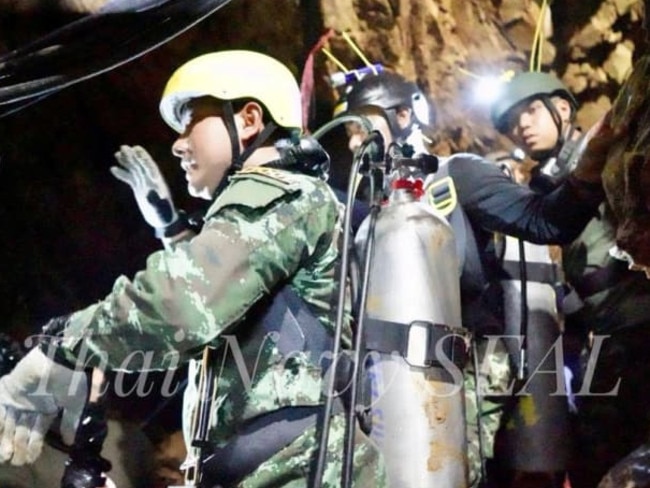
“Normal cave diving requires skills that go beyond what 99 per cent of the world’s divers have ever seen, which is why it is so very hard to become certified to dive in caves,” John Adsit wrote in an Educational Technology & Change Journal on Wednesday.
“The diving required in this cave, however, is not normal cave diving, and the rescuers are not normal cave divers.
“The rescuers will have to take a group of nonswimmers and instruct them to the point that they can be led through such a challenging environment without panicking.
“They will not be able to see anything.”
The murky waters of the dark, claustrophobic Tham Luang cave complex are in parts like “black coffee”.
The efforts via high-powered pumps trying to drain the caves of 128 million litres of water could be thwarted by the coming rains.
Sergeant Kunan, 38, was one of a team of retired frogmen brought in last week to help as volunteers.
He died from lack of oxygen after trying to take in O2 tanks to be staged along the escape route.
This was an integral part of the rescue plan, which even on paper looks precarious.
Each of the trapped schoolboys would be tethered to a frogman, with a static guide rope the 3km length of the passage.
To prepare for their journey out of the cave system, each 11- to 16-year-old would first be fitted with a wetsuit, aqua boots, a helmet and a scuba mask.
Each boy will be briefed on what is about to take place to help minimise the risk of panic, and escorted by two Thai Navy SEALs as they make their risky exit.
Instead of having their own scuba tanks, the boys will have to rely on an individual Navy rescue diver’s air supply shared with them along the way.
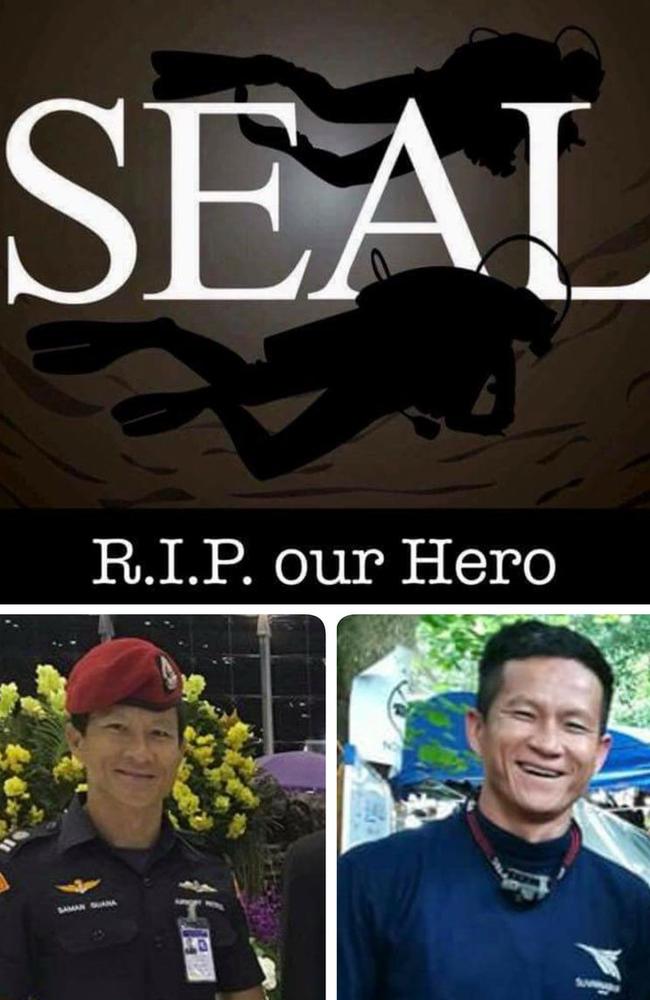

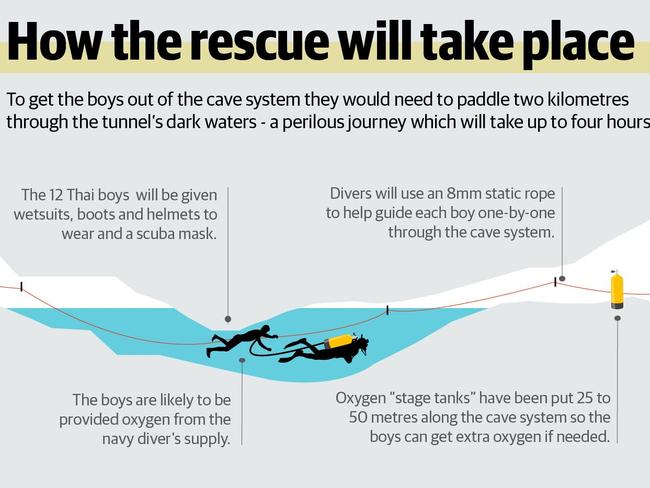
These are the stage tanks which Saman Kunan was helping to place along the route when he died.
The reason for his death, as pointed out by Chiang Rai governor Osoththanakorn, complicates the rescue.
It means that even the chambers not completely flooded by water, as in the narrow linked sections of the route, are not air pocket for the boys.
They will have to share their two SEAL companions’ oxygen tanks for longer than thought, meaning that even more stage tanks will have to be placed on the route.
The divers will use a static rope attached to the cave walls to help guide each boy one-by-one through the cave system of completely flooded chambers and those with air pockets.
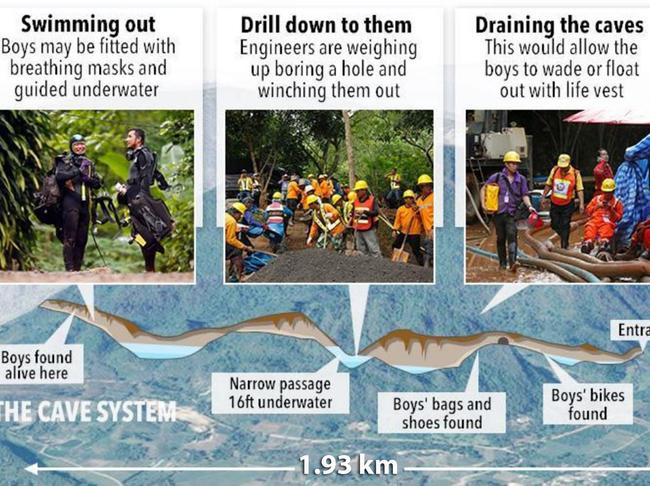
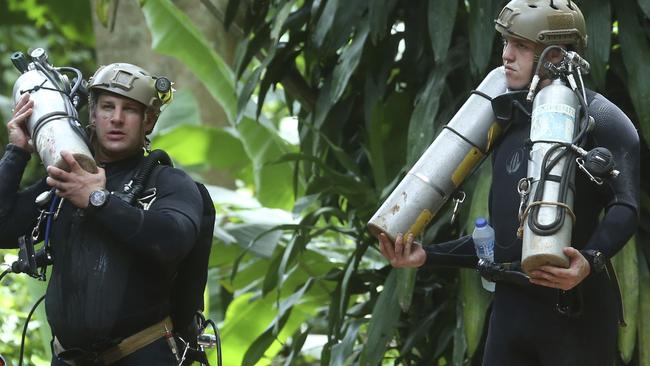
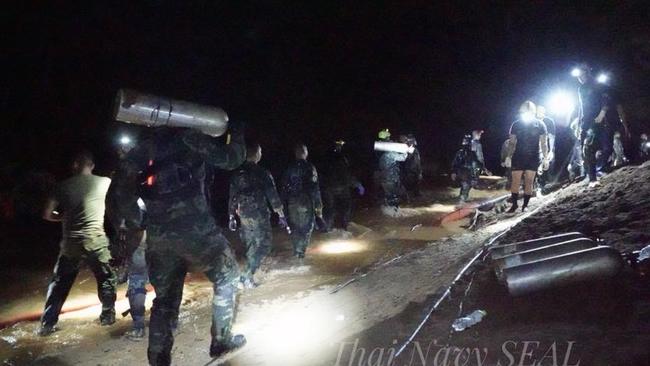
It appears that instead of at least two days of continuous individual four-hour rescues, that the SEALs plan to do them in a kind of continuous single file to reduce the time of the total operation.
The highly dangerous task could be further complicated by health issues, with two boys and their coach reportedly suffering from exhaustion due to malnutrition.
Thai infantry teams and forestry officials have continued to explore other potential exit points, including an adjacent 900m-long cave, in the hope it might connect to the boys.
The Royal Thai Navy regularly conducts joint naval training operations with the US Navy.
Its skilled divers, well used to difficult cave conditions, are revered in Thailand which was pinning its hopes on a full successful rescue, all survivors brought home.
Expert frogman Sergeant Kunan’s death has not dashed their hopes.
But as concerns for the mental as well as the physical health of the boys and their coach in the subterranean prison grow, there is one certainty, the monsoon rains are coming.


